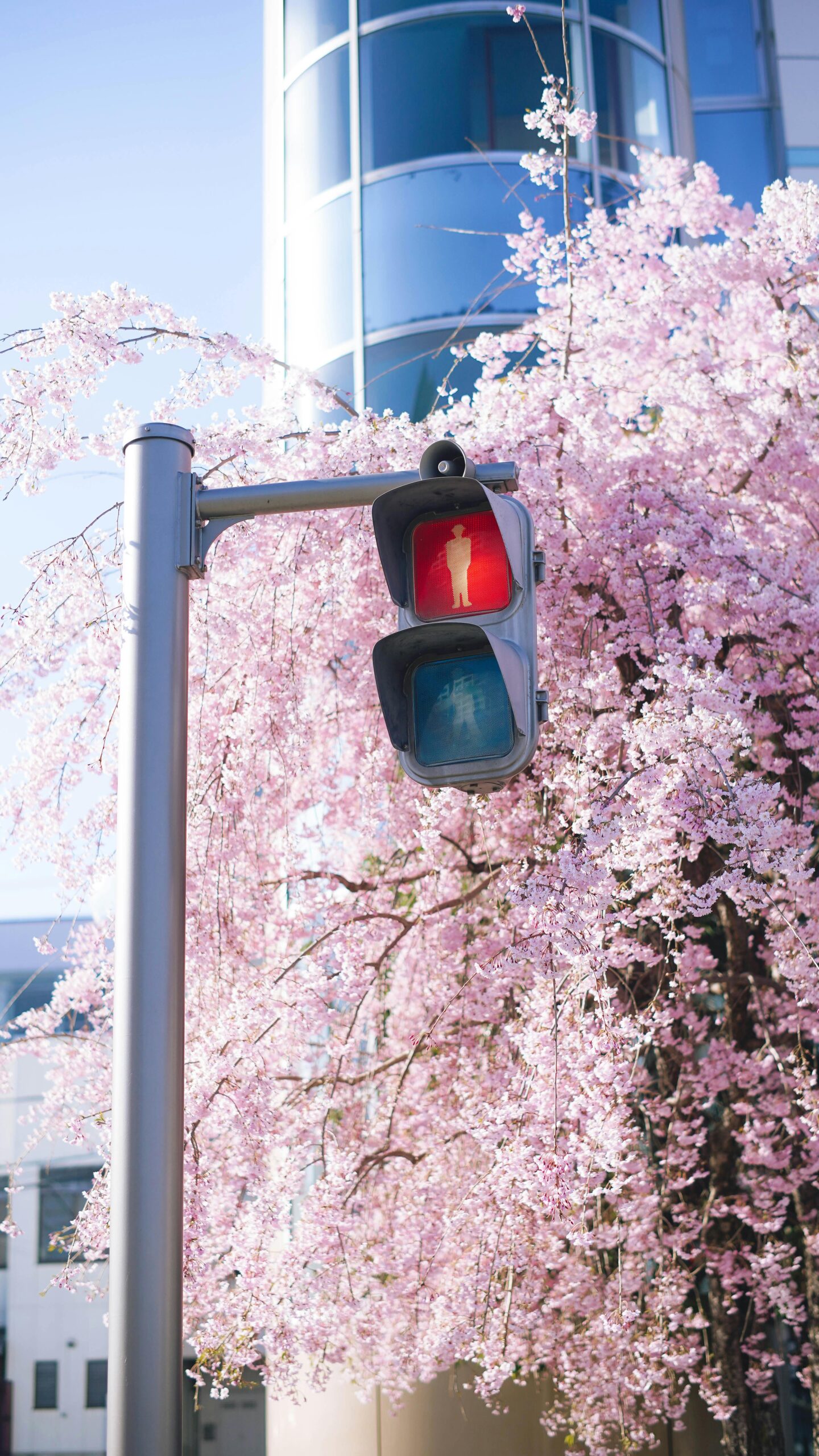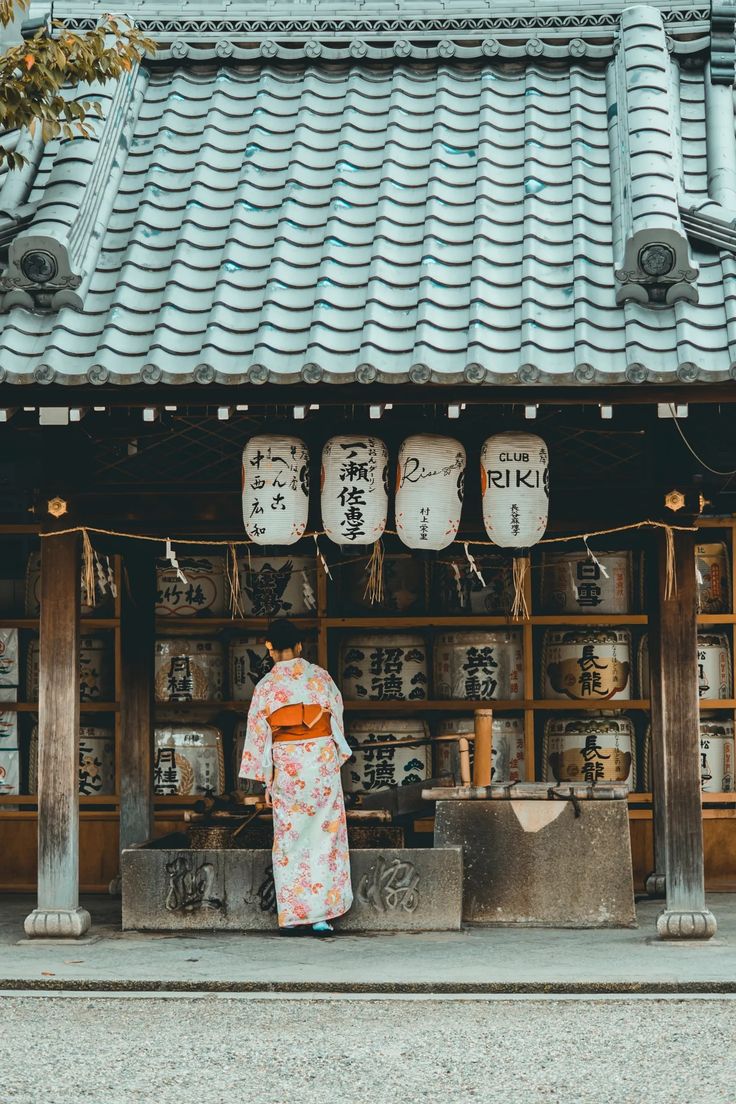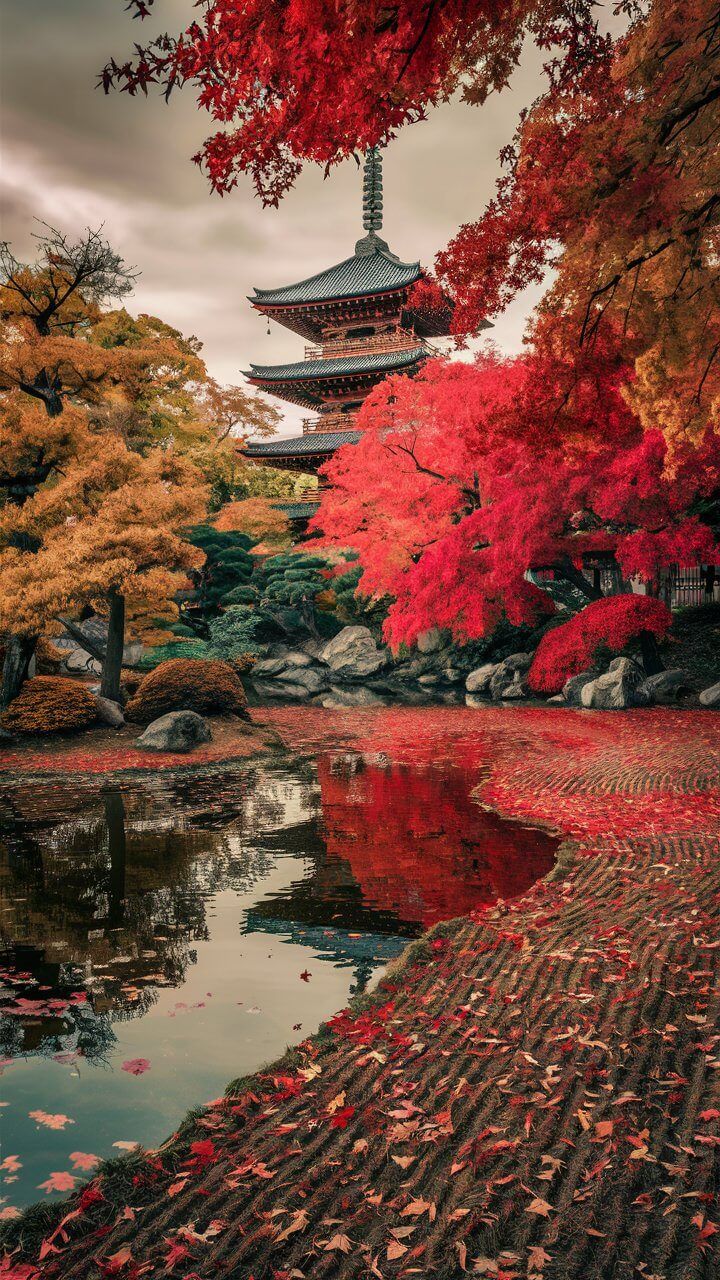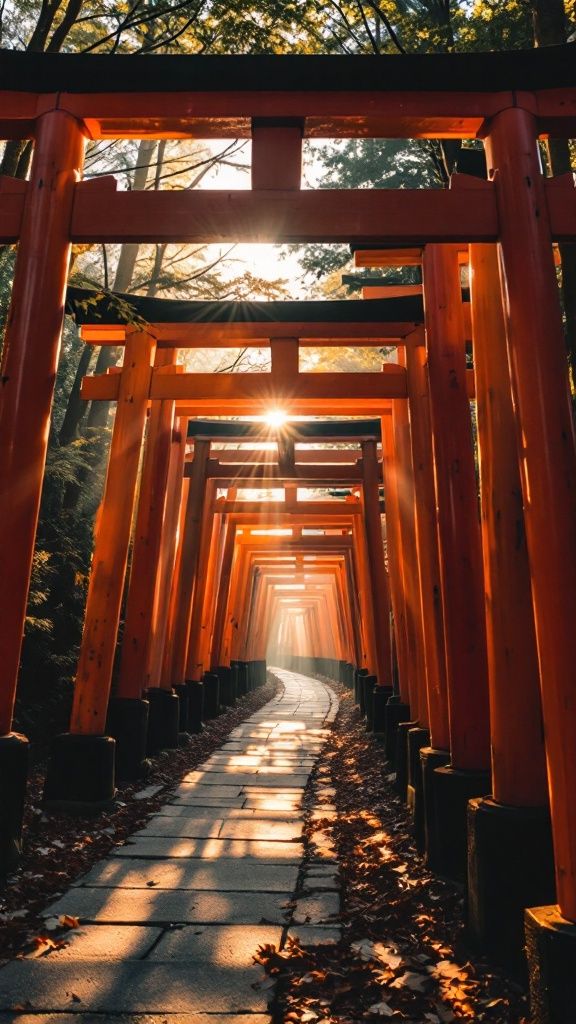The Best Time to Visit Japan for Each Season

Japan stands as a prime travel destination, offering a rich tapestry of cultural experiences, stunning landscapes, and vibrant cities. From the bustling streets of Tokyo to the serene temples of Kyoto, Japan’s allure is undeniable. However, the timing of your visit can significantly impact your experience, as each season in Japan brings its own unique charm and attractions. Understanding the best time to visit Japan is crucial for maximizing your adventure tourism experience, whether you’re seeking the cherry blossoms of spring or the colorful foliage of autumn.
Each season in Japan offers distinct opportunities for exploration and enjoyment. Spring is renowned for its breathtaking cherry blossoms, while summer invites travelers to partake in lively festivals and explore the country’s beautiful beaches. Autumn captivates with its stunning fall foliage, and winter transforms Japan into a wonderland of snow-covered landscapes and hot springs. By aligning your travel plans with the seasonal highlights, you can ensure a memorable and enriching journey through this captivating country.

Spring (March to May)
Cherry Blossoms as the Main Attraction
Spring in Japan is synonymous with the breathtaking beauty of cherry blossoms, or sakura, which draw visitors from around the globe. These delicate pink flowers bloom across the country, creating picturesque landscapes that are perfect for travel photography. Tokyo, Kyoto, and Hirosaki are among the most popular locations to witness this natural spectacle. In Tokyo, spots like Ueno Park and Shinjuku Gyoen offer stunning views, while Kyoto’s Philosopher’s Path and Maruyama Park provide a serene backdrop for cherry blossom viewing. Hirosaki, known for its castle park, hosts one of the most celebrated cherry blossom festivals in Japan.
The cultural significance of cherry blossoms is deeply rooted in Japanese tradition, symbolizing the transient nature of life. Hanami, or flower viewing, is a cherished practice where locals and tourists alike gather under the blooming trees for picnics and celebrations. These hanami festivals are vibrant events filled with food, music, and traditional performances, offering a unique cultural experience for visitors. Participating in a hanami festival provides an opportunity to immerse oneself in Japanese culture and appreciate the fleeting beauty of the blossoms.
Other Spring Activities
Beyond the allure of cherry blossoms, spring in Japan offers a wealth of activities for travelers. The mild weather during this season makes it an ideal time to explore Japan’s historic sites and cultural landmarks. Visiting ancient temples and shrines, such as Kyoto’s Kinkaku-ji and Nara’s Todai-ji, is particularly enjoyable in the pleasant spring climate. These sites not only offer a glimpse into Japan’s rich history but also provide stunning backdrops for travel photography.
Spring is also a time of vibrant festivals and traditional events across Japan. The Takayama Spring Festival, held in the picturesque town of Takayama, features elaborate floats and traditional music, while the Aoi Matsuri in Kyoto showcases a grand procession of participants in Heian-period costumes. These festivals offer a unique opportunity to experience Japan’s cultural heritage and enjoy the lively atmosphere of local celebrations. For those interested in adventure tourism, spring is an excellent time to explore Japan’s natural landscapes, from hiking trails in the Japanese Alps to the scenic beauty of Mount Fuji.
Practical Travel Tips for Spring
To make the most of a spring visit to Japan, it’s essential to plan ahead and consider a few practical travel tips. Given the popularity of cherry blossom season, booking travel accommodations early is crucial to secure the best options and avoid disappointment. Many hotels and vacation packages fill up quickly during this peak period, so early reservations are highly recommended.
Managing the influx of tourists is another important consideration. Popular cherry blossom spots can become crowded, especially during weekends and holidays. To enjoy a more relaxed experience, consider visiting these locations during weekdays or early in the morning. Additionally, purchasing travel insurance is advisable to cover any unexpected changes in plans or emergencies during your trip.
Overall, spring in Japan offers a captivating blend of natural beauty, cultural experiences, and historic exploration. By planning your travel itineraries carefully and embracing the seasonal highlights, you can create unforgettable memories in this enchanting country.
Summer (June to August)
Summer Festivals and Fireworks Displays
Summer in Japan is a vibrant season

marked by an array of festivals and fireworks displays that illuminate the night sky. These events are a cornerstone of Japanese culture, offering travelers a chance to engage with local customs and celebrations. One of the most notable festivals is the Gion Matsuri in Kyoto, a month-long event featuring grand processions, traditional music, and beautifully decorated floats. This festival provides a deep dive into Japan’s rich cultural heritage and is a must-see for those interested in cultural experiences.
Another highlight of the summer season is the Sumida River Fireworks Festival in Tokyo. This spectacular display attracts millions of spectators who gather along the riverbanks to witness the dazzling pyrotechnics. The festival is a perfect opportunity for travel photography, capturing the vibrant colors and festive atmosphere. Engaging with these local events allows travelers to experience the warmth and hospitality of Japanese communities, making for unforgettable memories.
Exploration of Nature
Summer is also an ideal time for adventure tourism in Japan, with numerous opportunities to explore the country’s stunning natural landscapes. The Japanese Alps offer some of the best hiking trails, with routes suitable for both beginners and experienced hikers. The Kamikochi Valley, located in the Northern Alps, is renowned for its breathtaking scenery, including crystal-clear rivers and majestic mountain peaks. Hiking in this region provides a refreshing escape from the summer heat and a chance to connect with nature.
For those seeking coastal attractions, Japan’s beaches are a popular summer destination. Okinawa, with its pristine white sands and turquoise waters, is perfect for beach activities such as snorkeling, diving, and sunbathing. The coastal areas of Shonan and Kamakura, closer to Tokyo, offer a more accessible option for beachgoers. These locations provide a relaxing retreat and are ideal for family travel ideas, offering activities suitable for all ages.
Considerations for Summer Travel
Traveling in Japan during the summer months requires some preparation to cope with the heat and humidity. Temperatures can soar, especially in urban areas, so it’s important to stay hydrated and wear lightweight, breathable clothing. Many travelers find it helpful to plan their activities for the cooler parts of the day, such as early morning or late afternoon, to avoid the midday heat.
Another consideration is navigating travel accommodations during the holiday periods, particularly the Obon Festival in mid-August. This is a time when many Japanese people travel to visit family, leading to increased demand for transportation and lodging. Booking accommodations well in advance is advisable to secure the best options and avoid last-minute price hikes. Additionally, travel insurance can provide peace of mind, covering any unexpected changes or cancellations during your trip.
Overall, summer in Japan offers a dynamic blend of cultural festivities, natural exploration, and beach relaxation. By planning ahead and embracing the seasonal highlights, travelers can enjoy a memorable and enriching experience in this captivating country.
Autumn (September to November)
Fall Foliage Viewing

Autumn in Japan is a season of breathtaking beauty, as the landscape transforms into a vibrant tapestry of red, orange, and gold. This is the perfect time for fall foliage viewing, an activity that attracts both locals and international travelers. Popular spots for enjoying the autumn colors include Nikko, with its stunning waterfalls and historic temples, and Arashiyama in Kyoto, known for its picturesque bamboo groves and scenic river views. These locations offer ideal settings for travel photography, capturing the essence of Japan’s natural beauty.
The cultural significance of Momijigari, or autumn leaf hunting, is deeply ingrained in Japanese tradition. This practice involves visiting scenic areas to appreciate the changing colors of the leaves, much like the cherry blossom viewings in spring. Participating in Momijigari provides a unique cultural experience, allowing travelers to connect with the Japanese appreciation for nature’s fleeting beauty. Whether you’re embarking on a solo travel adventure or exploring with family, the serene landscapes of autumn offer a peaceful retreat from the hustle and bustle of daily life.
Seasonal Cuisine and Cultural Experiences
Autumn is also a time to savor Japan’s seasonal cuisine, which features a variety of dishes that highlight the flavors of the harvest. Matsutake mushrooms, a prized delicacy, are often used in traditional dishes and are celebrated for their rich, earthy taste. Other seasonal ingredients include sweet potatoes, chestnuts, and persimmons, which are incorporated into a range of culinary delights. Sampling these dishes offers a delicious way to experience Japan’s culinary heritage.
In addition to its culinary offerings, autumn is a season of cultural experiences and local festivals. Harvest festivals, such as the Nagasaki Kunchi and the Takayama Autumn Festival, provide a glimpse into Japan’s agricultural traditions and community spirit. These events feature vibrant parades, traditional music, and dance performances, offering travelers an opportunity to engage with local customs and celebrations. For those interested in eco-friendly travel, participating in these festivals supports sustainable tourism practices by promoting local culture and traditions.
Travel Advice for Autumn Visitors
When planning a visit to Japan in autumn, it’s important to consider a few travel tips to enhance your experience. To avoid the crowds that flock to popular foliage spots, consider visiting during weekdays or early in the season. This allows for a more relaxed and intimate experience, away from the peak tourist influx. Additionally, crafting well-thought-out travel itineraries can help maximize your time and ensure you don’t miss any must-see attractions.
Autumn weather in Japan can vary significantly, with cooler temperatures in the north and milder conditions in the south. Packing layers is recommended to accommodate these fluctuations, ensuring comfort throughout your travels. Lightweight jackets, scarves, and comfortable walking shoes are essential for exploring both urban and rural areas. For those on a budget, travel tips such as using public transportation and seeking out local eateries can help manage expenses while still enjoying the richness of Japan’s offerings.
Overall, autumn in Japan is a season of stunning natural beauty, rich cultural experiences, and delectable cuisine. By planning your visit with these considerations in mind, you can enjoy a memorable journey through this enchanting country, capturing the essence of its autumnal charm.
Conclusion

Understanding the unique offerings of each season is crucial for crafting a memorable itinerary when visiting Japan. Each season presents its own set of attractions and experiences, from the cherry blossoms of spring to the vibrant festivals of summer, the stunning foliage of autumn, and the serene landscapes of winter. By aligning your travel plans with the seasonal highlights, you can ensure a rich and fulfilling journey that captures the essence of Japan’s diverse beauty and cultural heritage. Whether you’re drawn to the cultural experiences of traditional festivals, the adventure tourism opportunities in Japan’s natural landscapes, or the culinary delights of seasonal cuisine, each season offers something special to enhance your travel experience.
When planning a visit to Japan, it’s important for travelers to consider their personal preferences and interests. Some may be captivated by the tranquility of a solo travel adventure in the serene countryside, while others might prefer the excitement of family travel ideas in bustling cities. Understanding what you hope to gain from your trip can guide your choices and help you create a travel itinerary that resonates with your desires. Whether you’re seeking budget travel tips to make the most of your journey or looking for eco-friendly travel options to minimize your environmental impact, Japan offers a wealth of possibilities to suit every traveler’s needs.
Ultimately, the best time to visit Japan is a personal decision that depends on what you wish to experience. By taking into account the seasonal attractions and aligning them with your interests, you can create a travel experience that is both meaningful and unforgettable. Japan’s rich tapestry of cultural, natural, and culinary offerings ensures that every visit is unique, providing endless opportunities for exploration and discovery. Embrace the journey, and let the seasons of Japan guide you to an adventure that will leave a lasting impression.